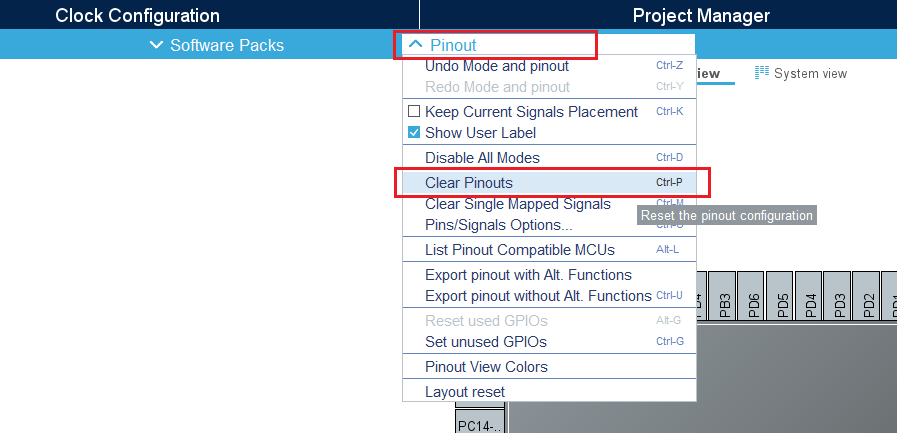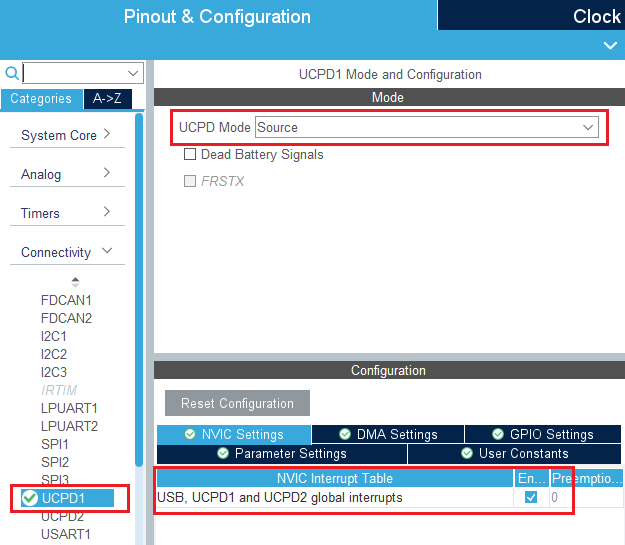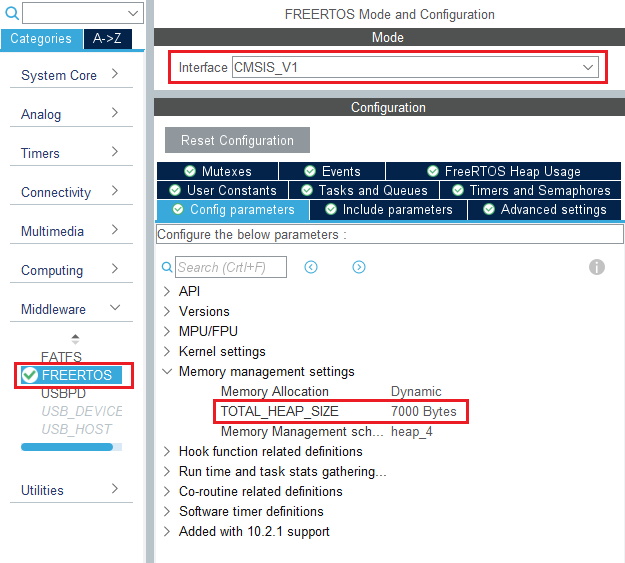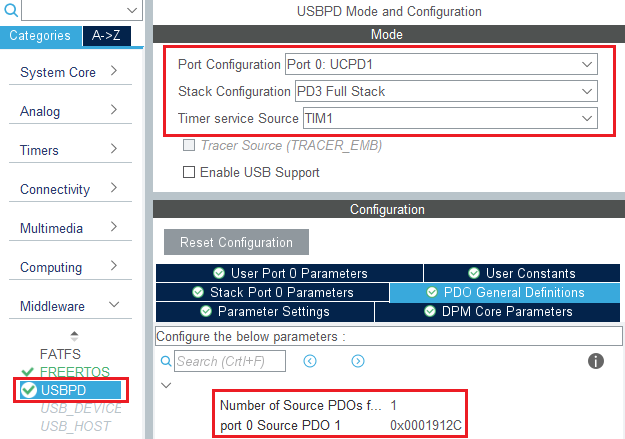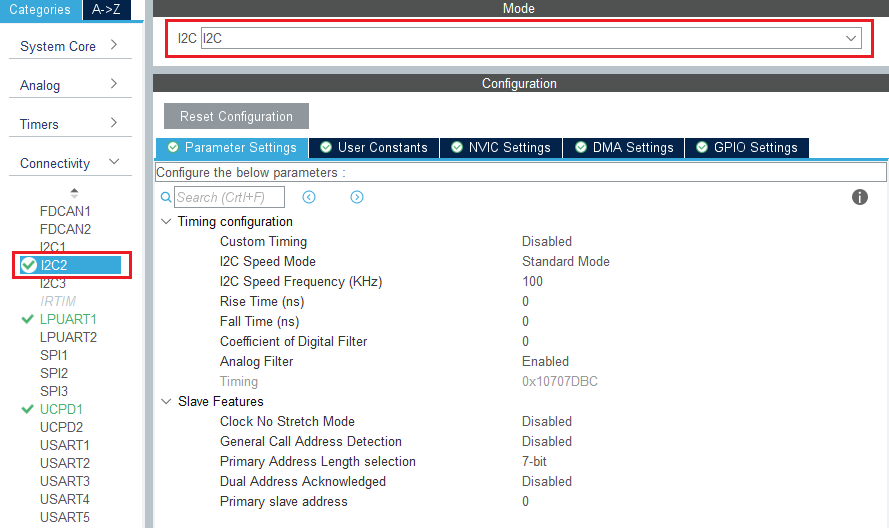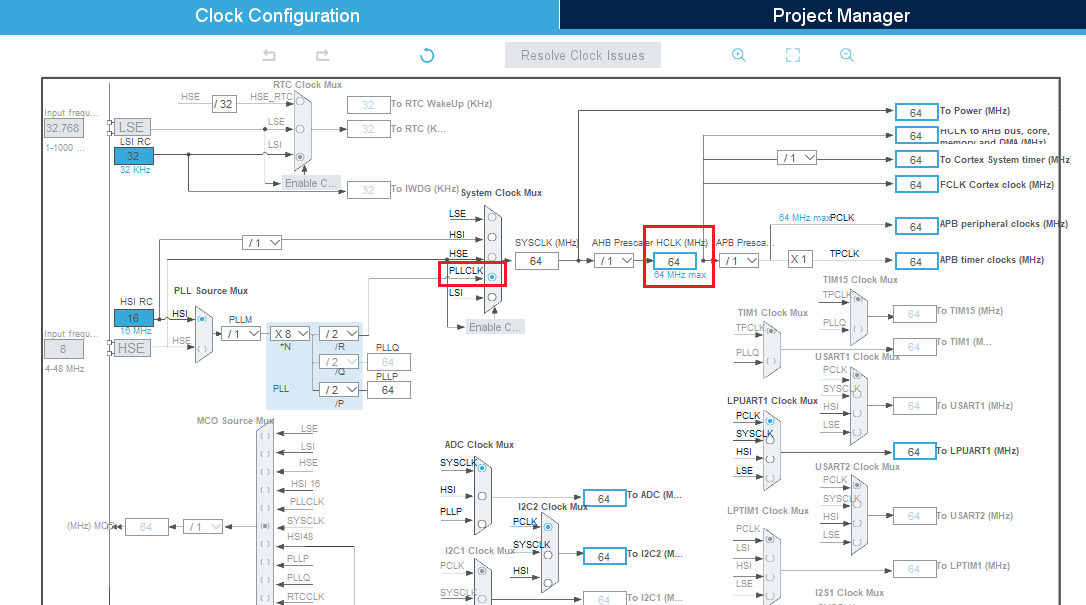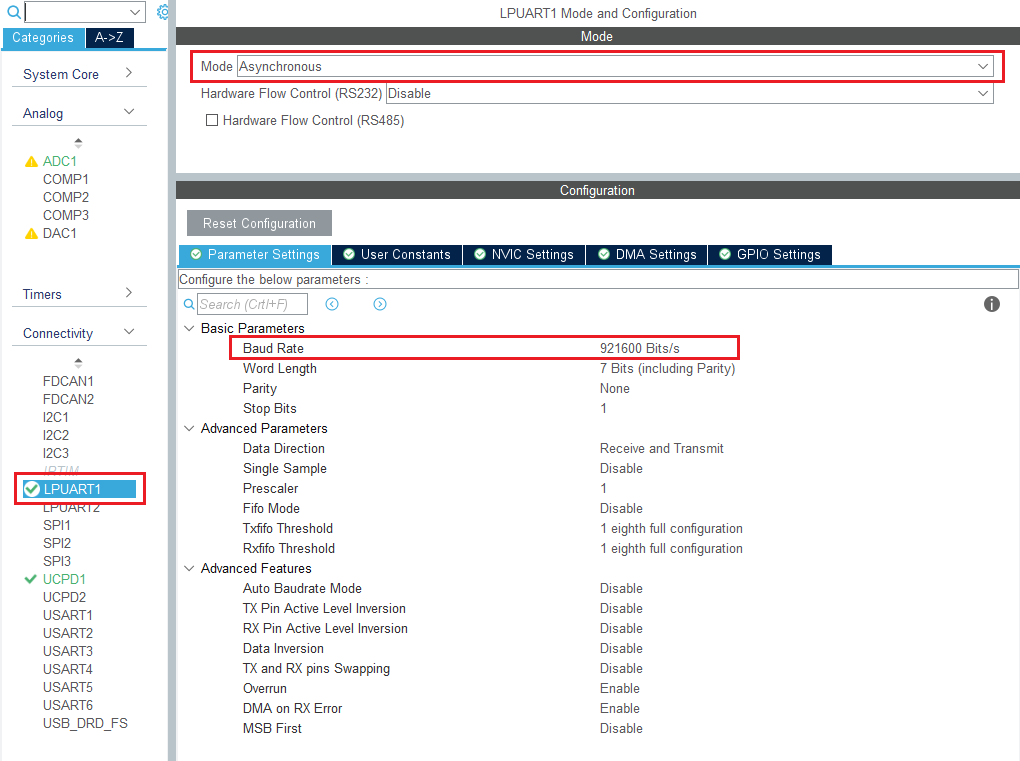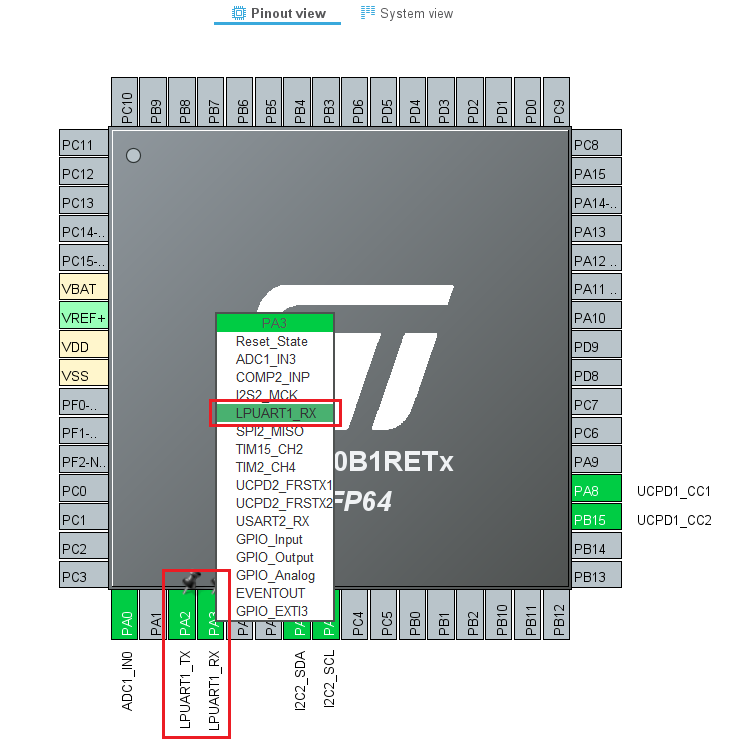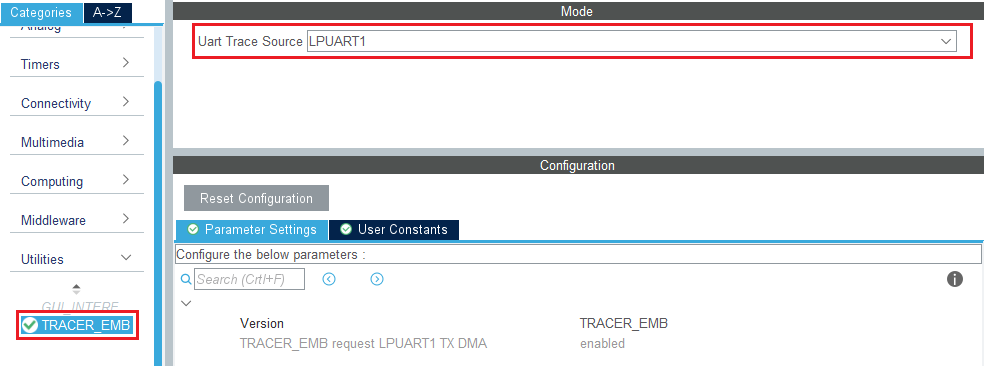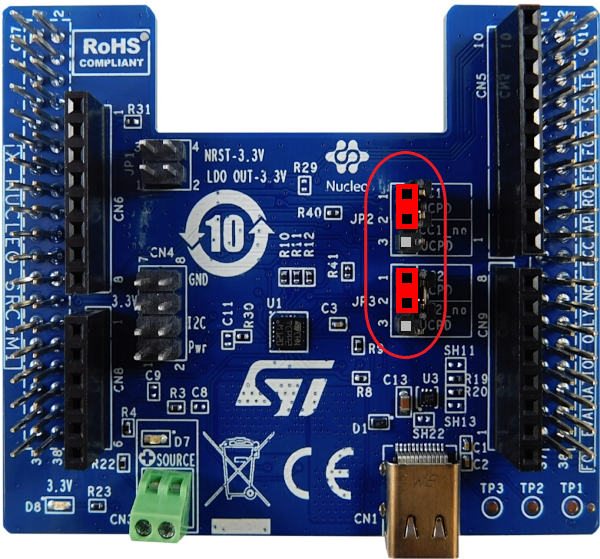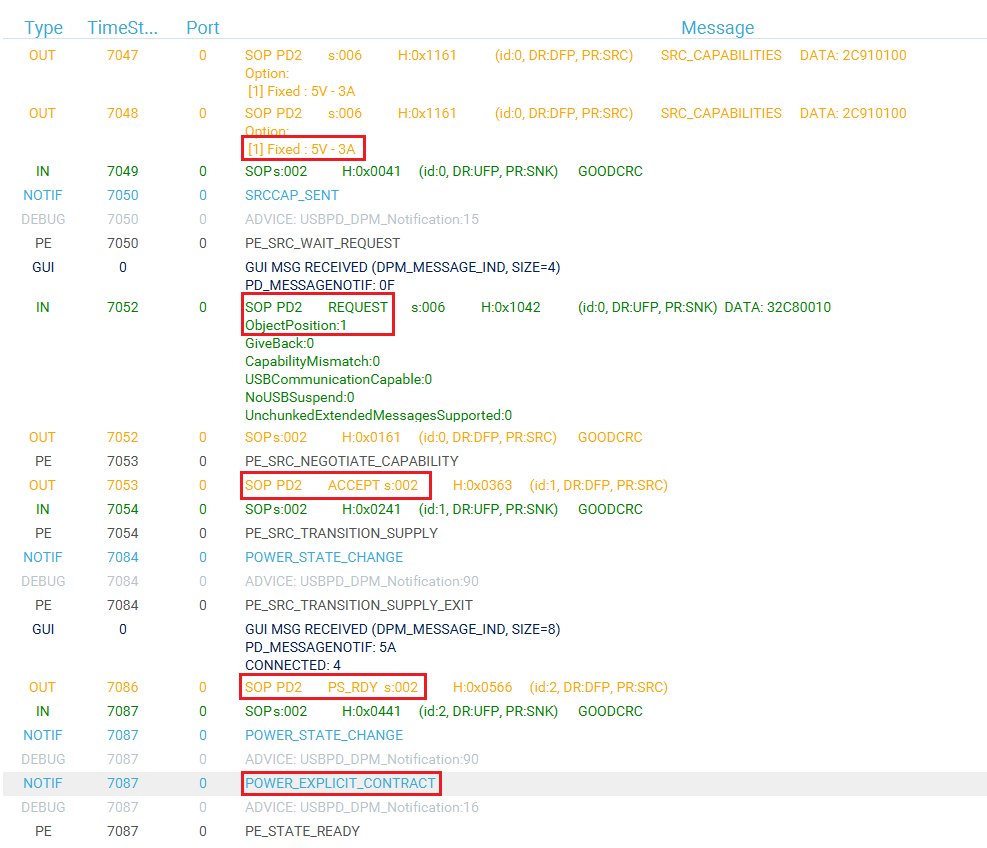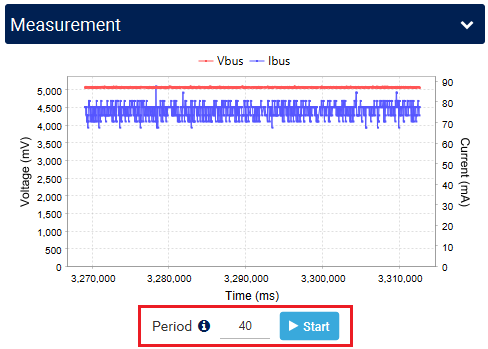tTarget description
This tutorial will help you to:
- Use the X-NUCLEO-SRC1M1 shield that includes a TCPP02-M18 protection circuit and provides a USB Type-C® connector
- Create a USB-PD Source application with the NUCLEO-G071RB board and the X-NUCLEO-SRC1M1 shield by using STM32CubeIDE software
Prerequisites
- Computer with Windows 7 (or higher)
- Computer with Windows 7 (or higher)
Hardware
- NUCLEO-G071RB (tested on rev C) [1]
- X-NUCLEO-SRC1M1 shield [2]
- A USB-PD sink device to test our USB-PD device (it can be the sink created in this wiki article, or a PD-capable mobile phone or device)
- USB cable Type-A to Micro-B
- USB Type-C® to Type-C® cable
Software
Literature
Create a USB-PD Source Device
![]() Total 60min
Total 60min
1. Software pack installation
Open STM32CubeMX, in the software pack area, click on the install/remove button
Then select the STMicroelectronics tab, scroll down to the X-Cube-TCPP software pack, and click on the install button if it is not already installed.
2. Creating the project
![]() 5min
5min
IN STM32CubeMX, create a New STM32 Project. As a target selection, choose the NUCLEO-G071RB from the Board Selector Tab
Click "Next", then enter your project's name. Leave the other fields as default and click "Finish".
When prompted for initializing peripherals with their default mode, click No.
3. Configuring the system
At this point, your project is created and in the next steps, we will configure the peripherals and options needed for the project.
3.1. Clear the pinout
To start from a blank configuration, click on the Pinout menu and select Clear Pinouts. This will reset the pinouts in the Pinout view.
3.2. Select the X-Cube-TCPP software pack
From the software pack menu,
Select the X-Cube-TCPP Software pack and enable its Source application, the tcpp0203 Board part and the X-NUCLEO-SRC1M1 Board support.
3.3. Configure UCPD peripheral
In the Connectivity tab, select the UCPD1 peripheral and enable it in source mode. Under the NVIC Settings tab, enable UCPD global interrupts.
Under the DMA Settings tab, add UCPD1_RX and UCPD1_TX DMA requests. Select DMA1 channel 4 for RX and DMA1 channel 2 for TX.
3.4. Configure FreeRTOS Middleware
In the Middleware section, enable FreeRTOS with CMSIS_V1 interface. Under the Config Parameters tab, change "TOTAL_HEAP_SIZE" to 7000 bytes.
3.5. Configure USBPD Middleware
In the Middleware section, enable USBPD with the following configuration:
- Port Configuration: Port 0: UCPD1
- Stack Configuration: PD3 Full Stack
- Timer service Source: TIM1
Under the PDO General Definitions tab, verify the following configuration:
- Number of Sink PDOs for port 0: 1
- Port 0 Sink PDO 1 0x0001912C (correspond to a simple 5V / 3A source)
The following table is extracted from USB Power Delivery Specification, Table 6-9 Fixed Supply PDO - Source. Used values and associated decoding for this project have been added to the table.
| Bit(s) | Description | Used value | Decoding |
|---|---|---|---|
| B31..30 | Fixed supply | 00b | Fixed |
| B29 | Dual-Role Power | 0b | No |
| B28 | USB Suspend Supported | 0b | No |
| B27 | Unconstrained Power | 0b | No |
| B26 | USB Communications Capable | 0b | No |
| B25 | Dual-Role Data | 0b | No |
| B24..22 | Reserved - Shall de set to zero | 000b | No |
| B21..20 | Peak Current | 00b | Peak Equals |
| B19..10 | Voltage in 50mV units | 0001100100b | 5V |
| B9..0 | Maximum current in 10mA units | 0100101100b | 3A |
3.6. Configure ADC peripheral
For the Power Delivery stack to work, VBUS needs to be monitored. To do it, an ADC needs to be configured to measure the VBUS voltage and current.
As we are going to use the X-NUCLEO-SRC1M1 BSP, the ADC configuration does not need to be done in CubeMX.
As we need the ADC LL drivers for it to work properly, we still need to configure the ADC in CubeMX for it to include the driver files, but the actual configuration and init function will not be called in our project.
In the Analog section, enable ADC1 peripheral channel 0. Leave the configuration as default, as the software pack will reconfigure it.
3.7. Configure I2C peripheral
As the X-NUCLEO-SRC1M1 shield includes a TCPP02-M18 that communicates via I2C, we need to enable the I2C peripheral in our project.
In the Connectivity section, enable I2C2 peripheral, in I2C mode. Leave the configuration as default, as the software pack will reconfigure it.
Note: We need to enable the I2C2 peripheral in the CubeMX view for code generation to include the I2C drivers as we do for the ADC.
3.8. Enable the software pack
IN the middleware and software pack category, select the X-Cube-TCPP software pack. Enable the 'Source' Application, the 'tcpp0203' Board Part and the 'X-NUCLEO-SRC1M1' Board support.
3.9. Configure Clocks
Under Clock Configuration main tab, change system clock mux to PLLCLK. It will set HCLK clock to 64MHz.
3.10. [OPTIONAL] Configure Tracer for debug
3.10.1. Configure LPUART
On the STM32G0 Nucleo-64 board, the Virtual COM port connected to the ST-LINK is the LPUART1.
In the Connectivity section, enable LPUART1 in Asynchronous mode, and baudrate 921600 bauds. Leave the rest as default.
In the pinout view, left-click PA2 and PA3 to remap them to LPUART1_TX and LPUART1_RX.
Under the DMA Configuration tab, add a request for LPUART1_TX. Use DMA1 channel 3.
Finally, under the NVIC Settings tab, enable LPUART1 global interrupts.
3.10.2. Configure embedded tracer
In the Utilities section, select TRACER_EMB and use LPUART1 as the trace source.
Then, go back to the USBPD middleware configuration and check the Tracer Source checkbox.
3.10.3. Configure UCPD monitor firmware responder for debug
The firmware interactive stack responder can be activated if interaction with the USB-PD stack is needed, using the UCPD monitor tool STM32CubeMonUCPD. In the Utilities section, enable GUI_INTERFACE, then enter free text to describe the board.
4. Configure project
![]() 5min
5min
Under the Project Manager main tab, configure the minimum stack size to 0xC00 under the Project tab. This is a first value, which can be tuned later, depending on application needs.
Under the Advanced Settings tab, change the LPUART driver to LL to save a bit of memory heap size. As we do not need ADC and I2C initialization functions (handled by the BSP drivers), uncheck Generate Code for the MX_I2C2_Init and MX_ADC1_Init functions.
5. Generate code
Save your file with Ctrl+s and select generate code.
A warning appears, informing that a proper HAL timebase is not defined. It is safer to use a dedicated timer as a HAL timebase source.
For this demonstration, the below warning can be ignored by clicking Yes.
6. Configure the shield's jumpers
Place jumpers on the X-NUCLEO-SRC1M1 shield as shown in the picture.
Next, plug an external 5V source into the green "source" connector.
With this configuration, the board will be powered by the ST-Link of the Nucleo board.
If you want to power your system from the external power supply connected to the "source" terminal, and not from the ST-Link, please add the JP1 jumpers between 1-2 and 3-4.
7. Compile and run the application
The compilation must be performed without error or warnings.
Build the application by clicking on the ![]() button (or select Project/Build Project).
button (or select Project/Build Project).
Run the application by clicking on the ![]() button (or select Run/Run)
button (or select Run/Run)
8. Establish the first explicit contract
![]() 5min
5min
With your application running on the board, launch the STM32CubeMonitor-UCPD application.
The user's board must appear in the list when clicking "Refresh list of connected boards", so double click on the
corresponding line (or click "NEXT").
Note: The ComPort may be different. It depends on the number of boards installed on the computer. Then double click on the desired UCPD port, here Port 0, or select it and click "NEXT".
Click on the TRACES button in the bottom right corner to get protocol traces. You can then plug a power delivery sink into the USB Type-C® receptacle of the X-NUCLEO-SRC1M1 shield. The screen may look like this:
The figure above shows the communication between the STM32G0 and the power delivery sink on the right panel. It is possible to verify the correct sequence to reach an explicit contract:
- The capabilities are sent by the STM32G0 source (OUT orange message).
- The request is sent by the sink (IN green message).
- The ACCEPT and the PS_RDY are sent by the STM32G0 source (OUT orange message).
- The contract negotiation ends by the POWER_EXPLICIT_CONTRACT notification (blue message).
For more details on how to use this tool, refer to UM2468. And for more details on the protocol, refer to UM2552. Note that this trace is very helpful for debugging and application development.
You can also use the Measurement window in STM32CubeMonitor-UCPD to display a graph of the measured VBUS voltage and delivered current. Set the sampling period and click start.
You can find other applicative examples on GitHub: x-cube-tcpp
9. For information, Code inserted by the software pack
Following code has been automatically inserted by the software pack in:
| stm32g0xx_it.c |
Between the /* USER CODE BEGIN-END Includes */ tags:
/* USER CODE BEGIN Includes */
#include "src1m1_conf.h"
/* USER CODE END Includes */
Between the /* USER CODE BEGIN-END 1 */ tags: /* USER CODE BEGIN 1 */
#if defined(TCPP0203_SUPPORT)
/**
* @brief This function handles the external line 4_15 interrupt request.
* (Associated to FLGn line in case of TCPP0203 management)
* @retval None
*/
void TCPP0203_PORT0_FLG_EXTI_IRQHANDLER(void)
{
/* Manage Flags */
if (TCPP0203_PORT0_FLG_EXTI_IS_ACTIVE_FLAG() != RESET)
{
/* Call BSP USBPD PWR callback */
BSP_USBPD_PWR_EventCallback(USBPD_PWR_TYPE_C_PORT_1);
/* Clear Flag */
TCPP0203_PORT0_FLG_EXTI_CLEAR_FLAG();
}
}
#endif /* TCPP0203_SUPPORT */
/* USER CODE END 1 */
|
| usbpd_dpm_user.h |
Between the /* USER CODE BEGIN-END Typedef */ tags:
/* USER CODE BEGIN Typedef */
typedef struct
{
uint32_t DPM_ListOfRcvSNKPDO[USBPD_MAX_NB_PDO]; /*!< The list of received Sink Power Data Objects from
Port partner (when Port partner is a Sink or a DRP port). */
uint32_t DPM_NumberOfRcvSNKPDO; /*!< The number of received Sink Power Data Objects from port
Partner (when Port partner is a Sink or a DRP port).
This parameter must be set to a value lower than
USBPD_MAX_NB_PDO */
uint32_t DPM_RDOPosition; /*!< RDO Position of requested DO in Source list of capabilities */
uint32_t DPM_RDOPositionPrevious; /*!< RDO Position of requested DO in Source list of capabilities */
uint32_t DPM_RequestedVoltage; /*!< Value of requested voltage */
uint32_t DPM_RequestedCurrent; /*!< Value of requested current */
uint32_t DPM_RcvRequestDOMsg;
uint32_t DPM_RequestDOMsg; /*!< Request Power Data Object message to be sent */
uint32_t DPM_RequestDOMsgPrevious; /*!< Previous Request Power Data Object message to be sent */
} USBPD_HandleTypeDef;
/* USER CODE END Typedef */
Between the /* USER CODE BEGIN-END Private_Variables */ tags: /* USER CODE BEGIN Private_Variables */
extern USBPD_HandleTypeDef DPM_Ports[USBPD_PORT_COUNT];
/* USER CODE END Private_Variables */
|
| usbpd_pdo_defs.h |
Between the /* USER CODE BEGIN-END typedef */ tags:
/* USER CODE BEGIN typedef */
/**
* @brief USBPD Port PDO Structure definition
*/
typedef struct
{
uint32_t *ListOfPDO; /*!< Pointer on Power Data Objects list, defining
port capabilities */
uint8_t *NumberOfPDO; /*!< Number of Power Data Objects defined in ListOfPDO
This parameter must be set at max to @ref USBPD_MAX_NB_PDO value */
} USBPD_PortPDO_TypeDef;
/**
* @brief USBPD Port PDO Storage Structure definition
*/
typedef struct
{
USBPD_PortPDO_TypeDef SourcePDO; /*!< SRC Power Data Objects */
} USBPD_PWR_Port_PDO_Storage_TypeDef;
/* USER CODE END typedef */
|
| usbpd_pwr_if.c |
Between the /* USER CODE BEGIN-END Private_Variables */ tags:
/* USER CODE BEGIN Private_Variables */
/**
* @brief USBPD Port PDO Storage array declaration
*/
USBPD_PWR_Port_PDO_Storage_TypeDef PWR_Port_PDO_Storage[USBPD_PORT_COUNT];
/* USER CODE END Private_Variables */
Between the /* USER CODE BEGIN-END USBPD_PWR_IF_Init */ tags: /* USER CODE BEGIN USBPD_PWR_IF_Init */
USBPD_StatusTypeDef _status = USBPD_OK;
/* Set links to PDO values and Port 0 number (defined in PDO arrays in H file). */
PWR_Port_PDO_Storage[USBPD_PORT_0].SourcePDO.ListOfPDO = (uint32_t *) PORT0_PDO_ListSRC;
PWR_Port_PDO_Storage[USBPD_PORT_0].SourcePDO.NumberOfPDO = &USBPD_NbPDO[1];
return _status;
/* USER CODE END USBPD_PWR_IF_Init */
Between the /* USER CODE BEGIN-END USBPD_PWR_IF_SetProfile */ tags: /* USER CODE BEGIN USBPD_PWR_IF_SetProfile */
USBPD_PDO_TypeDef _pdo;
USBPD_SNKRDO_TypeDef _rdo;
_rdo.d32 = DPM_Ports[PortNum].DPM_RcvRequestDOMsg;
_pdo.d32 = PORT0_PDO_ListSRC[0];
return (BSP_ERROR_NONE ==BSP_USBPD_PWR_VBUSSetVoltage_Fixed(PortNum,
_pdo.SRCFixedPDO.VoltageIn50mVunits * 50,
(_rdo.FixedVariableRDO.OperatingCurrentIn10mAunits * 10),
(_rdo.FixedVariableRDO.MaxOperatingCurrent10mAunits * 10)
)? USBPD_OK : USBPD_ERROR);
/* USER CODE END USBPD_PWR_IF_SetProfile */
Between the /* USER CODE BEGIN-END USBPD_PWR_IF_GetPortPDOs */ tags: /* USER CODE BEGIN USBPD_PWR_IF_GetPortPDOs */
uint32_t nbpdo, index, nb_valid_pdo = 0;
uint32_t *ptpdoarray = NULL;
USBPD_PDO_TypeDef pdo_first;
USBPD_PDO_TypeDef pdo;
/* Check if valid port */
if (USBPD_PORT_IsValid(PortNum))
{
/* According to the type of PDO to be read, set the pointer on values and number of elements */
switch(DataId)
{
case USBPD_CORE_DATATYPE_SRC_PDO :
nbpdo = *PWR_Port_PDO_Storage[PortNum].SourcePDO.NumberOfPDO;
ptpdoarray = PWR_Port_PDO_Storage[PortNum].SourcePDO.ListOfPDO;
/* Save the 1st PDO */
pdo_first.d32 = *ptpdoarray;
/* Reset un-chunked bit if current revision is PD2.0*/
if (USBPD_SPECIFICATION_REV2 == DPM_Params[PortNum].PE_SpecRevision)
{
pdo_first.SRCFixedPDO.UnchunkedExtendedMessage = USBPD_PDO_SRC_FIXED_UNCHUNK_NOT_SUPPORTED;
}
break;
default :
nbpdo = 0;
break;
}
/* Copy PDO data in output buffer */
for (index = 0; index < nbpdo; index++)
{
pdo.d32 = *ptpdoarray;
/* Copy only PDO (and not APDO in case of current revision is PD2.0) */
if ((USBPD_SPECIFICATION_REV2 == DPM_Params[PortNum].PE_SpecRevision)
&& (pdo.GenericPDO.PowerObject == USBPD_CORE_PDO_TYPE_APDO))
{
}
else
{
/* Copy 1st PDO as potentially FRS or UNCHUNKED bits have been reset */
if (0 == index)
{
(void)memcpy(Ptr, (uint8_t*)&pdo_first.d32, 4u);
}
else
{
(void)memcpy((Ptr + (nb_valid_pdo * 4u)), (uint8_t*)ptpdoarray, 4u);
}
nb_valid_pdo++;
}
ptpdoarray++;
}
/* Set the number of read PDO (number of u32 elements); */
*Size = nb_valid_pdo;
}
/* USER CODE END USBPD_PWR_IF_GetPortPDOs */
Between the /* USER CODE BEGIN-END USBPD_PWR_IF_SearchRequestedPDO */ tags: /* USER CODE BEGIN USBPD_PWR_IF_SearchRequestedPDO */
if((RdoPosition == 0) || (RdoPosition > *PWR_Port_PDO_Storage[PortNum].SourcePDO.NumberOfPDO))
{
/* Invalid PDO index */
return USBPD_FAIL;
}
*Pdo = PWR_Port_PDO_Storage[PortNum].SourcePDO.ListOfPDO[RdoPosition - 1];
return USBPD_OK;
/* USER CODE END USBPD_PWR_IF_SearchRequestedPDO */
|
| usbpd_dpm_user.c |
Between the /* USER CODE BEGIN-END Private_Variables */ tags:
/* USER CODE BEGIN Private_Variables */
USBPD_HandleTypeDef DPM_Ports[USBPD_PORT_COUNT];
/* USER CODE END Private_Variables */
Between the /* USER CODE BEGIN-END USBPD_USER_PRIVATE_FUNCTIONS_Prototypes */ tags: /* USER CODE BEGIN USBPD_USER_PRIVATE_FUNCTIONS_Prototypes */
static USBPD_StatusTypeDef DPM_TurnOnPower(uint8_t PortNum, USBPD_PortPowerRole_TypeDef Role);
static USBPD_StatusTypeDef DPM_TurnOffPower(uint8_t PortNum, USBPD_PortPowerRole_TypeDef Role);
/* USER CODE END USBPD_USER_PRIVATE_FUNCTIONS_Prototypes */
Between the /* USER CODE BEGIN-END USBPD_DPM_UserInit */ tags: /* USER CODE BEGIN USBPD_DPM_UserInit */
/* PWR SET UP */
if(USBPD_OK != USBPD_PWR_IF_Init())
{
return USBPD_ERROR;
}
return USBPD_OK;
/* USER CODE END USBPD_DPM_UserInit */
Between the /* USER CODE BEGIN-END USBPD_DPM_UserCableDetection */ tags: /* USER CODE BEGIN USBPD_DPM_UserCableDetection */
switch(State)
{
case USBPD_CAD_EVENT_ATTACHED:
case USBPD_CAD_EVENT_ATTEMC:
{
if (DPM_Params[PortNum].PE_PowerRole == USBPD_PORTPOWERROLE_SRC)
{
if (USBPD_OK != USBPD_PWR_IF_VBUSEnable(PortNum))
{
/* Should not occur */
osDelay(6000);
NVIC_SystemReset();
}
}
break;
}
case USBPD_CAD_EVENT_DETACHED :
case USBPD_CAD_EVENT_EMC :
default :
{
if (DPM_Params[PortNum].PE_PowerRole == USBPD_PORTPOWERROLE_SRC)
{
if (USBPD_OK != USBPD_PWR_IF_VBUSDisable(PortNum))
{
/* Should not occur */
while(1);
}
}
break;
}
}
/* USER CODE END USBPD_DPM_UserCableDetection */
Between the /* USER CODE BEGIN-END USBPD_DPM_HardReset */ tags: /* USER CODE BEGIN USBPD_DPM_HardReset */
switch (Status)
{
case USBPD_HR_STATUS_WAIT_VBUS_VSAFE0V:
if (USBPD_PORTPOWERROLE_SRC == CurrentRole)
{
/* Reset the power supply */
DPM_TurnOffPower(PortNum, USBPD_PORTPOWERROLE_SRC);
}
break;
case USBPD_HR_STATUS_WAIT_VBUS_VSAFE5V:
if (CurrentRole == USBPD_PORTPOWERROLE_SRC)
{
/* Power on the power supply */
DPM_TurnOnPower(PortNum, CurrentRole);
}
break;
default:
break;
}
/* USER CODE END USBPD_DPM_HardReset */
Between the /* USER CODE BEGIN-END USBPD_DPM_GetDataInfo */ tags: /* USER CODE BEGIN USBPD_DPM_GetDataInfo */
/* Check type of information targeted by request */
switch(DataId)
{
case USBPD_CORE_DATATYPE_REQ_VOLTAGE: /*!< Get voltage value requested for BIST tests, expect 5V */
*Size = 4;
(void)memcpy((uint8_t*)Ptr, (uint8_t *)&DPM_Ports[PortNum].DPM_RequestedVoltage, *Size);
break;
case USBPD_CORE_DATATYPE_SRC_PDO: /*!< Handling of port Source PDO */
USBPD_PWR_IF_GetPortPDOs(PortNum, DataId, Ptr, Size);
*Size *= 4;
break;
// case USBPD_CORE_PPS_STATUS: /*!< PPS Status message content */
// break;
// case USBPD_CORE_SNK_EXTENDED_CAPA: /*!< Retrieve of Sink Extended capability message content */
// break;
// case USBPD_CORE_INFO_STATUS: /*!< Information status message content */
// break;
// case USBPD_CORE_MANUFACTURER_INFO: /*!< Retrieve of Manufacturer info message content */
// break;
// case USBPD_CORE_BATTERY_STATUS: /*!< Retrieve of Battery status message content */
// break;
// case USBPD_CORE_BATTERY_CAPABILITY: /*!< Retrieve of Battery capability message content */
// break;
default:
DPM_USER_DEBUG_TRACE(PortNum, "ADVICE: update USBPD_DPM_GetDataInfo:%d", DataId);
break;
}
/* USER CODE END USBPD_DPM_GetDataInfo */
Between the /* USER CODE BEGIN-END USBPD_DPM_SetDataInfo */ tags: /* USER CODE BEGIN USBPD_DPM_SetDataInfo */
/* Check type of information targeted by request */
switch(DataId)
{
case USBPD_CORE_DATATYPE_RDO_POSITION: /*!< Reset the PDO position selected by the sink only */
if (Size == 4)
{
uint8_t* temp;
temp = (uint8_t*)&DPM_Ports[PortNum].DPM_RDOPosition;
(void)memcpy(temp, Ptr, Size);
DPM_Ports[PortNum].DPM_RDOPositionPrevious = *Ptr;
temp = (uint8_t*)&DPM_Ports[PortNum].DPM_RDOPositionPrevious;
(void)memcpy(temp, Ptr, Size);
}
break;
// case USBPD_CORE_DATATYPE_RCV_SRC_PDO: /*!< Storage of Received Source PDO values */
// break;
// case USBPD_CORE_DATATYPE_RCV_SNK_PDO: /*!< Storage of Received Sink PDO values */
// break;
case USBPD_CORE_DATATYPE_RCV_REQ_PDO : /*!< Storage of Received Sink Request PDO value */
if (Size == 4)
{
memcpy((uint8_t *)&DPM_Ports[PortNum].DPM_RcvRequestDOMsg, Ptr, 4);
}
break;
// case USBPD_CORE_INFO_STATUS: /*!< Information status message content */
// break;
// case USBPD_CORE_ALERT: /*!< Storing of received Alert message content */
// break;
// case USBPD_CORE_GET_MANUFACTURER_INFO: /*!< Storing of received Get Manufacturer info message content */
// break;
// case USBPD_CORE_GET_BATTERY_STATUS: /*!< Storing of received Get Battery status message content */
// break;
// case USBPD_CORE_GET_BATTERY_CAPABILITY: /*!< Storing of received Get Battery capability message content*/
// break;
// case USBPD_CORE_SNK_EXTENDED_CAPA: /*!< Storing of Sink Extended capability message content */
// break;
default:
DPM_USER_DEBUG_TRACE(PortNum, "ADVICE: update USBPD_DPM_SetDataInfo:%d", DataId);
break;
}
/* USER CODE END USBPD_DPM_SetDataInfo */
Between the /* USER CODE BEGIN-END USBPD_DPM_EvaluateRequest */ tags: /* USER CODE BEGIN USBPD_DPM_EvaluateRequest */
USBPD_StatusTypeDef _retr = USBPD_REJECT;
USBPD_PDO_TypeDef pdo;
USBPD_SNKRDO_TypeDef rdo;
/* read the request value received */
rdo.d32 = DPM_Ports[PortNum].DPM_RcvRequestDOMsg;
/* Search PDO in Port Source PDO list, that corresponds to Position provided in Request RDO */
if (USBPD_PWR_IF_SearchRequestedPDO(PortNum, rdo.GenericRDO.ObjectPosition, &pdo.d32) == USBPD_OK)
{
/* Evaluate the request */
if(pdo.GenericPDO.PowerObject == USBPD_CORE_PDO_TYPE_FIXED)
{
if((rdo.FixedVariableRDO.OperatingCurrentIn10mAunits > pdo.SRCFixedPDO.MaxCurrentIn10mAunits)
|| (rdo.FixedVariableRDO.MaxOperatingCurrent10mAunits > pdo.SRCFixedPDO.MaxCurrentIn10mAunits))
{
/* Sink requests too much maximum operating current */
/* USBPD_DPM_EvaluateRequest: Sink requests too much maximum operating current */
_retr = USBPD_REJECT;
}
else
{
/* Save the power object */
*PtrPowerObject = pdo.GenericPDO.PowerObject;
/* Set RDO position and requested voltage in DPM port structure */
DPM_Ports[PortNum].DPM_RequestedVoltage = pdo.SRCFixedPDO.VoltageIn50mVunits * 50;
DPM_Ports[PortNum].DPM_RDOPositionPrevious = DPM_Ports[PortNum].DPM_RDOPosition;
DPM_Ports[PortNum].DPM_RDOPosition = rdo.GenericRDO.ObjectPosition;
_retr = USBPD_ACCEPT;
}
}
}
return _retr;
/* USER CODE END USBPD_DPM_EvaluateRequest */
Between the /* USER CODE BEGIN-END USBPD_USER_PRIVATE_FUNCTIONS */ tags: /* USER CODE BEGIN USBPD_USER_PRIVATE_FUNCTIONS */
/**
* @brief Turn Off power supply.
* @param PortNum The current port number
* @param Role Port power role
* @retval USBPD_OK, USBPD_ERROR
*/
static USBPD_StatusTypeDef DPM_TurnOffPower(uint8_t PortNum, USBPD_PortPowerRole_TypeDef Role)
{
USBPD_StatusTypeDef status;
status = USBPD_PWR_IF_VBUSDisable(PortNum);
return status;
}
/**
* @brief Turn On power supply.
* @param PortNum The current port number
* @param Role Port power role
* @retval USBPD_ACCEPT, USBPD_WAIT, USBPD_REJECT
*/
static USBPD_StatusTypeDef DPM_TurnOnPower(uint8_t PortNum, USBPD_PortPowerRole_TypeDef Role)
{
USBPD_StatusTypeDef status;
/* Enable the output */
status = USBPD_PWR_IF_VBUSEnable(PortNum);
return status;
}
/* USER CODE END USBPD_USER_PRIVATE_FUNCTIONS */
|
10. References



